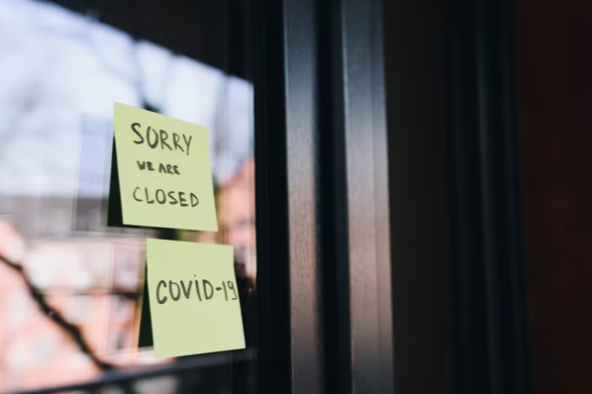Background
Commercial tenants and landlords were hit hard by the forced closures and lockdowns caused by the pandemic – with many tenants finding themselves unable to pay their rent. To give businesses the breathing space to assess how to approach their commercial rent debts whilst the COVID-19 restrictions were in place, the Coronavirus Act 2020 introduced a moratorium period from 26 March 2020. This means that landlords were stopped from forfeiting the tenancy for non-payment of rent, or using the statutory procedure of the Commercial Rent Arrears Recovery (CRAR).
This measure ended on 25 March 2022 (except for certain eligible businesses who remain protected for the next six months), the day after the Commercial Rent (Coronavirus) Act 2022 became law in England. The moratorium period in Wales has been further extended by the Coronavirus Act 2020 (Alteration of Expiry Date)(Wales) Regulations 2022 to 24 September 2022 with the above restrictions remaining until then. The Act covers any unpaid rent owed by commercial tenants to their landlords between 21 March 2020 and 18 July 2021 (in England) or 7 August 2021 (in Wales), or until the last date the COVID-19 restrictions were removed from the tenant’s business sector. This is known as the “protected period”, while the rent arrears incurred by the business tenant are known as the “protected rent debt”.
This means that landlords and tenants are now subjected to a legally binding arbitration process, unless they’ve already reached an agreement themselves. Business Minister Paul Scully commented that “This new law will give commercial tenants and landlords the ability to draw a line under the uncertainty caused by the pandemic so they can plan ahead and return to normality”. But how does it work, in practice?
The Arbitration Process
Before making a reference to arbitration, landlords and tenants are encouraged to negotiate their own agreements to suit their particular circumstances. They will need to show that they have taken their own initiative to resolve any conflicts. This is part of the arbitration process. The parties are free to continue negotiations outside of the arbitration process, including pursuing other forms of alternative dispute resolution, such as mediation.
Subject to any future extensions, the window to apply for arbitration will be six months from the date the legislation came into force (so, 24 September 2022 at the latest). Arbitrators may award a reduction of protected rent debt and/or time to pay, with a maximum period to repay of 24 months.
If negotiations have failed, the process under the Act is as follows:
- The claimant (which can be either the landlord or the business tenant) sends a letter to the other party (the respondent), notifying them of their intention to apply for arbitration. In other words, a letter of notification. It’s expected that a proposal detailing how to settle the unpaid protected rent debt is attached to this.
- The respondent then has 14 days to respond to the letter of notification. Their response can include a counter proposal with supporting evidence.
- The claimant then has 14 days to consider the respondent’s response and reply to it, or must wait 28 days to take the next step if the respondent does not respond.
- If the letter of notification doesn’t result in a resolution, either party can apply for arbitration. The application must show that the above steps have been followed first. These are the pre-application requirements, and the application will be rejected if the pre-application requirements are not met. The application must include a formal proposal detailing a resolution for the unpaid protected rent with supporting evidence.
- An approved arbitrator will review the application and if the businesses are eligible will accept the application. They will either conduct the hearing themselves, seek another arbitrator, or add it to a waiting list.
- Depending on who made the application, the other party has 14 days from when they received the formal proposal to submit their own counter proposal. Each party then has a final opportunity to submit their final proposals and the arbitrator can request for further information at this stage if needed.
- Both parties can then agree to a hearing, or they can ask the arbitrator to make a decision based on the information provided in the application and proposals.
- A hearing is held (no later than 14 days from when the request is made). This is expected to be one session only and no longer than six hours, during which the parties can state their case. The format of the hearing should be inquisitorial, rather than not adversarial.
- The arbitrator then has 14 days from the hearing (or as soon as reasonably practicable) to consider the evidence and then make a legally binding decision. This decision must be published.
- The party making reference to arbitration must pay the arbitrator’s fee up front, but this is split 50/50 in any decision and each party bears its own costs in the arbitration (unless one party has behaved unreasonably).
The decision of an arbitrator will be based on the ability of the tenant to pay protected rent debts. The decision should respect the principles that an award should be aimed at preserving or restoring the viability of the tenant’s business, and consistent with preserving the landlord’s solvency. An arbitrator will look at the assets and liabilities of the tenant, the tenant’s rent payment history under the tenancy, the impact of the pandemic on the tenant’s business, and any other appropriate information as regards the financial standing of the tenant.
The Code of Practice
The “Code of practice for commercial property relationships following the COVID-19 pandemic” was published on 9 November 2021 and applies to the whole of the UK. It is intended to help landlords and tenants to resolve disputes by providing best practice guidance (including for landlords and tenants who are not in the scope of the arbitration process) and promoting good practice within landlord and tenant relationships, particularly regarding the negotiation process.
The Code sets out that tenants who can pay their rent debt in full should do so, and at the first instance. Tenants unable to pay in full should negotiate with their landlord in the expectation that the landlord shares the burden where they are able to do so, and only as far as necessary, by waiving some or all rent arrears or giving time to pay.
A useful tool – but not a panacea
This Act is intended to provide some protection and a process to deal with the unpaid rent that has accrued in the preceding 24 months so that all parties can “move on”. The Code supplementing the Act aims to strike a balance between a tenant’s obligations and ability to pay, and a landlord’s solvency. It is likely to be a useful tool in situations where a tenant was forced to close and the rent arrears from that time continue to be outstanding with no agreement reached between the parties as to how to settle those arrears.
But cases where a landlord has allowed the situation to remain unresolved throughout may well be rare. The Act cannot be used to re-open previous settlements or agreements. There is also uncertainty over what protections are available to supply chains who were not expressly forced to close by the Government.
Are you having issues resolving disputes with your commercial landlord or tenant? Our property disputes team can help. Don’t hesitate to contact Tom Jones (t.jones@capitallaw.co.uk) for an initial chat.




